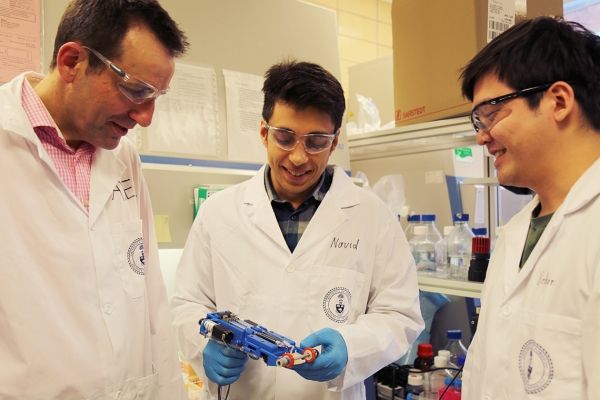University of Toronto researchers have developed a handheld 3D skin printer that deposits even layers of skin tissue to cover and heal deep wounds. The team believes it to be the first device that forms tissue in situ, depositing and setting in place, within two minutes or less.
The research, led by PhD student Navid Hakimi under the supervision of Associate Professor Axel Guenther of the Faculty of Applied Science & Engineering, and in collaboration with Dr. Marc Jeschke, director of the Ross Tilley Burn Centre at Sunnybrook Hospital and professor of immunology at the Faculty of Medicine, was recently published in the journal Lab on a Chip.
For patients with deep skin wounds, all three skin layers – the epidermis, dermis and hypodermis – may be heavily damaged. The current preferred treatment is called split-thickness skin grafting, where healthy donor skin is grafted onto the surface epidermis and part of the underlying dermis.
Split-thickness grafting on large wounds requires enough healthy donor skin to traverse all three layers, and sufficient graft skin is rarely available. This leaves a portion of the wounded area “ungrafted” or uncovered, leading to poor healing outcomes.
Continue reading at University of Toronto.
Image via University of Toronto.


